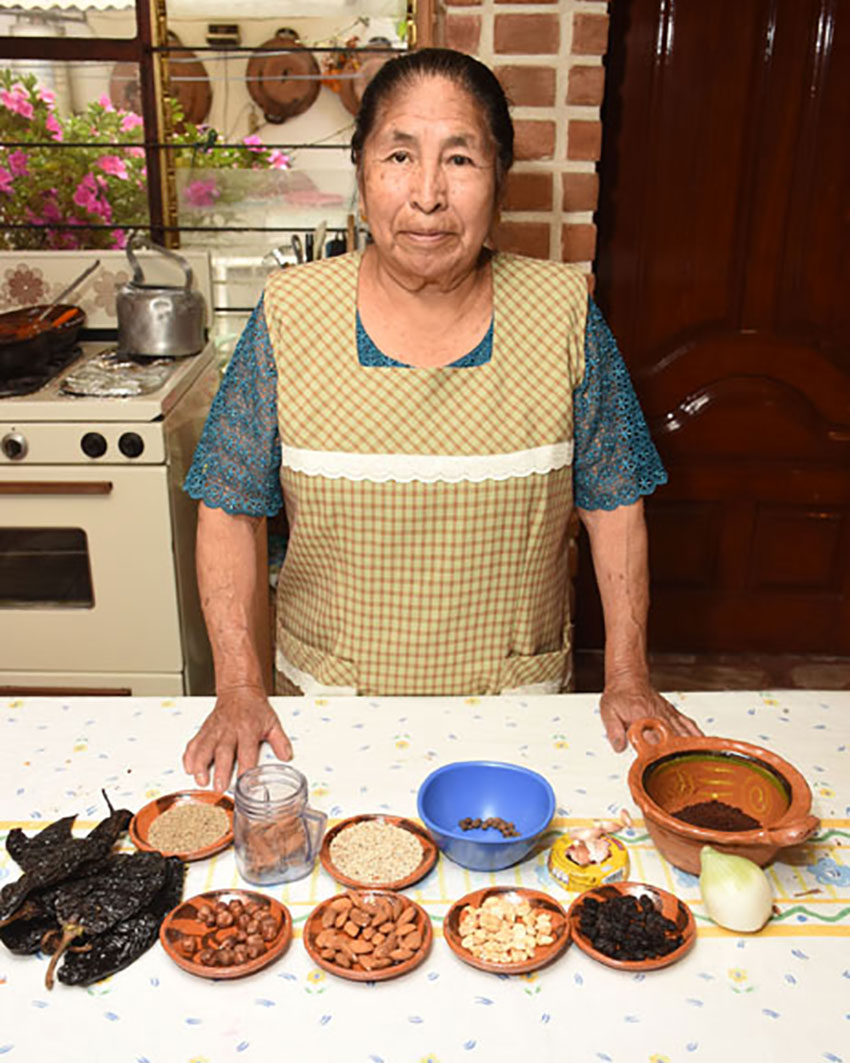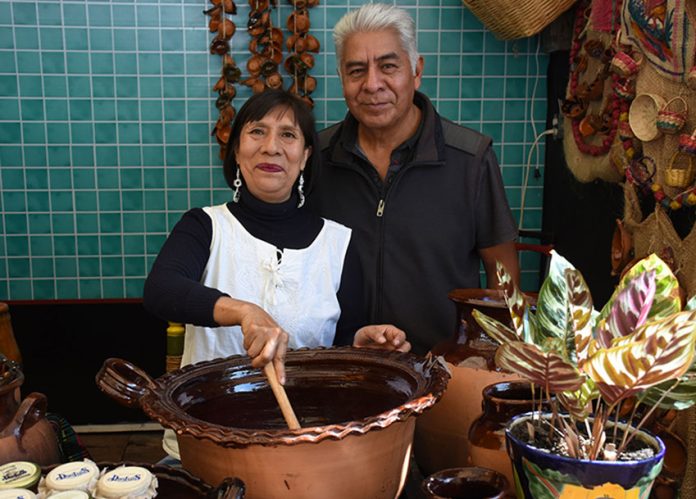San Pedro Atocpan is a beautiful little pueblo and one of a dozen in Milpa Alta, a borough of Mexico City. It’s been designated as a barrio mágico — a magical neighborhood — and has a lovely church that was dedicated in 1680, a pretty park in the town’s center and winding cobblestone streets made for walking.
But none of these are what draws people to the pueblo. What draws them is mole, one of Mexico’s most revered dishes, because San Pedro is billed as the Mole Capital of Mexico.
Mole had a fairly humble beginning, one that stretches back at least as far as the Aztecs who made a simple sauce called chilmole. “It is a salsa of just chiles and tomatoes and almost no spices,” said Luís Gutiérrez Romero, a San Pedro resident who has researched mole’s history for many years. “It is still very common in Oaxaca, Puebla and Tlaxcala.”
According to Gutierrez, mole’s transition from a simple sauce to a thick and flavorful version began after the Conquest. The Spaniards brought nuts and spices with them that were new to indigenous groups who soon began incorporating them into their foods. “This was especially true in Puebla,” said Gutiérrez.
“Puebla had an important role in the development of mole. It is at the crossroads of México [state], Veracruz, Oaxaca and Tlaxcala. Puebla still provides chiles for our mole.”

There are several competing stories (or legends) that purport to tell how the mole we know today came to be.
The most popular story is that Sor Andrea de Asunción, a nun in a convent in Puebla, created it in 1680 (although some claim this actually happened in the 16th century). Supposedly, a bishop was making a surprise visit and the nun had a “celestial inspiration” that led to her creating mole. Others claim it was a monk who first created the sauce.
The most fanciful story is that wind blew a bunch of ingredients into a large pot and they somehow combined perfectly to make mole. “These versions are pretty but not true,” said Gutiérrez. “I believe the process of making mole had its origins in fiestas and where people prepared food, in the pueblos, especially in Tlaxcala and some pueblos close to San Martín. I believe with all this mixing, people tried different things and I believe mole continued to change from the 16th through the 18th century.”
He estimates that there are over 200 different kinds of mole, but there’s no way to be sure. In San Pedro, popular varieties include red, green, almond and pipian. Every pueblo and, really, every household has its own special recipe. Making mole from scratch is quite a task since each kind has at least 20 ingredients and requires two or three days of work.
Epitacia Juárez Casteñada, an 80-year-old resident of San Gregorio Atlapulco, is one of a handful of people who still make mole at home. Her specialty is mole rojo — red mole.
First, she thoroughly washes two kinds of chiles — mulato and pasilla, removes the seeds, dries the chiles and then takes them to be ground. Then she toasts and grinds a handful of five different nuts by hand using a molcajete, a bowl made from volcanic stone. This, she said, imparts flavor to the mole. Next, she grinds eight different spices, also by hand, adding them to the nuts, forming a powder that she then fries using lard or oil, finally thinning the resulting paste with chicken stock. Clearly, a lot of work. Fortunately, San Pedro’s streets are lined with restaurants and stores serving up mole.
Jacal de María Candelaria is one of the few restaurants where mole is still made by hand. “It is artisanal mole,” said Aurelia Arroyo Martínez, the owner.
“With industrial production, machines are used to grind the ingredients. With artisanal, it is all made by hand. There is a big difference in flavor. We have a grinder made of [black volcanic] stones, which give the mole a distinct flavor and consistency. We also taste the mole as we make it; you cannot do that with industrial production.”
She admits that making artisanal mole is a lot of work since her moles have as many as 36 ingredients but, she said, “Vale la pena.“ It is worth it.
All of the stores offer mole as both a powder and paste. “The only difference is that the powdered mole lasts longer,” explained Luis Juan Alvarado Retana, owner of Mole Don Luis. His store uses recipes handed down from his mother, with only a few changes. “We have made them a little sweeter, a little less acidic.”
Marta Álvarez Cordera, his wife, gave me a short course on how to prepare mole. “Many cooks brown the mole first,” she said as she cooked using a clay pot known as a cazuela. “Some fry a little tomato in oil before adding the mole and browning it. When that is done, simply add water or stock and mix it until you have the consistency you like.”
In Mexico, the majority of cooks use lard instead of oil for frying and chicken stock to thin the mole but vegetable oil and vegetable stock work fine. As Arroyo said, “Preparing mole is more art than science.”

Once done, the mole can be poured over enchiladas or rice or pretty much anything you enjoy eating. The most popular item on the menu in San Pedro is turkey leg with mole spooned over it.
A vegetarian option is to steam up some vegetables, add them to the mole and pour the mix over rice. Toss in some frijoles and you’ve got a complete meal.
San Pedro’s Feria Nacional de Mole has been held in October each year since 1976. It’s held in a park just outside the pueblo and features dozens of restaurants and stores. It’s a great place to sample the wide variety of moles available.
This year’s version is scheduled for October 3-25 but with the uncertainties due to the coronavirus, it’s best to check before heading to the pueblo.
Joseph Sorrentino is a regular contributor to Mexico News Daily. He lives in San Gregorio Atlapulco, Mexico City.
